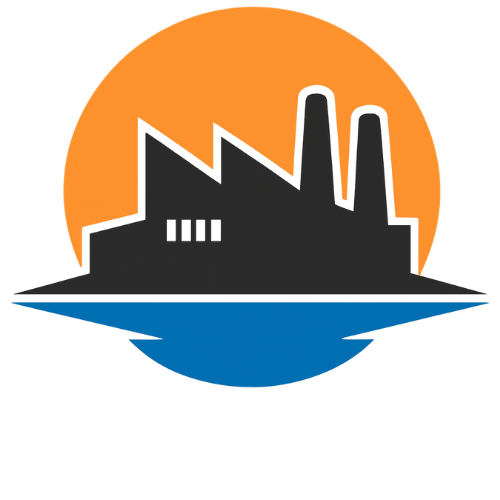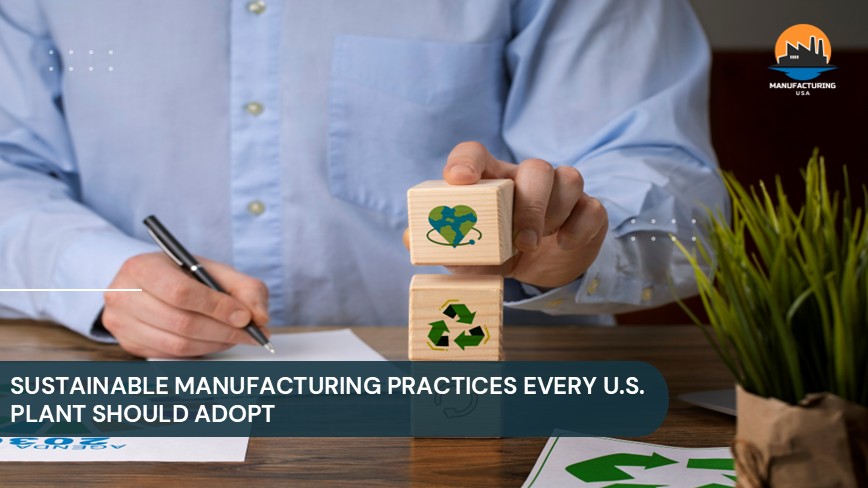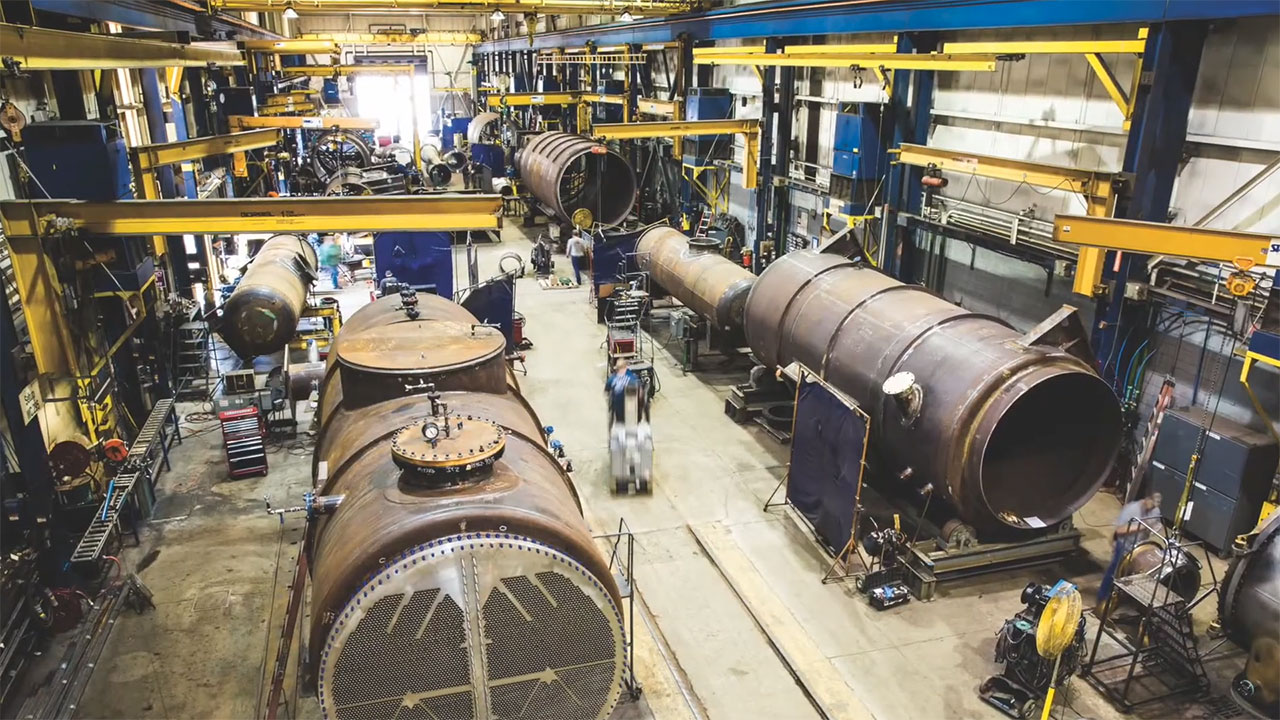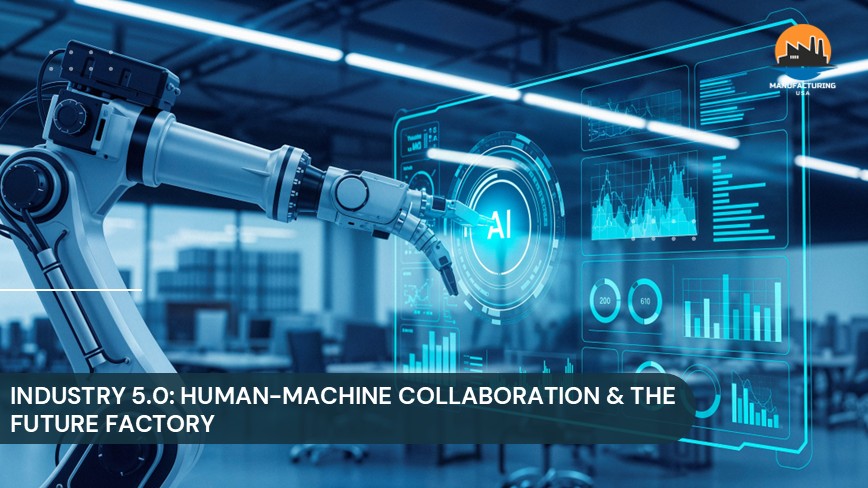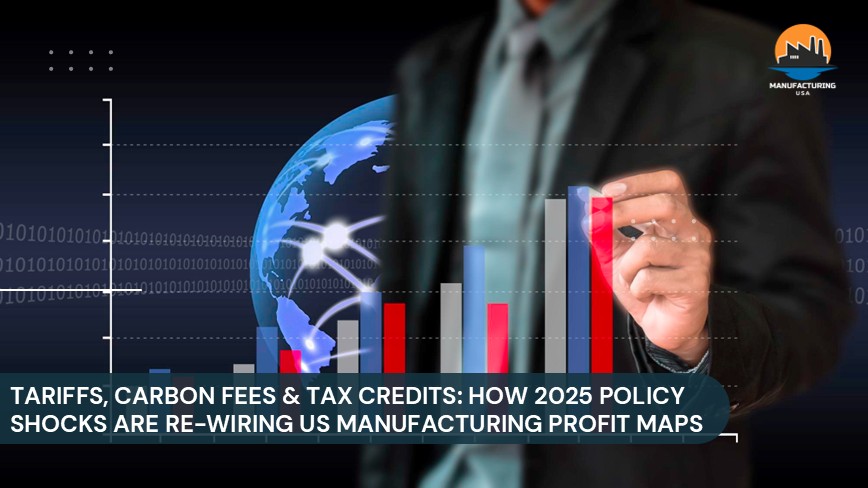In modern times, sustainability in manufacturing is crucial for U.S. plants due to rising consumer demand and tightening regulations. Consumers increasingly choose brands with eco-friendly practices, while government measures like the Clean Air Act and the Inflation Reduction Act are pushing for greener operations. Similarly, a 2022 Manufacturing Leadership Council report showed 58% of manufacturers integrating sustainability, with this number expected to grow. By adopting sustainable practices, manufacturers build consumer trust and gain a competitive edge in an environmentally conscious market.
In the blog, the emphasis will be on key sustainable practices that U.S. manufacturing plants can adopt to enhance their operational efficiency and environmental responsibility. These practices support compliance with regulatory standards, offer long-term cost savings, and strengthen brand reputation. The blog will also provide actionable insights for manufacturers aiming to incorporate sustainability into their operations.
Key Sustainable Manufacturing Practices:
- Energy Efficiency and Green Technologies
As per a report, industrial processes account for approximately 46% of global energy consumption each year, highlighting the sector’s significant environmental footprint. In the United States, around 80% of that industrial energy is consumed by core production industries. To address rising energy demands and environmental concerns, manufacturers are increasingly adopting energy-efficient technologies and renewable energy sources to reduce both carbon emissions and operational costs. Furthermore, these improvements support sustainability goals and lead to economic benefits. According to an industry report, each doubling of cumulative production generally results in a 20% reduction in production costs, including energy expenses, due to improved efficiencies and economies of scale.
Some Common Practices Include:
- Retrofitting facilities with LED lighting and energy-efficient HVAC systems.
- Installing solar panels, wind turbines, or purchasing renewable energy credits (RECs).
- Using smart energy management systems (EMS) for real-time monitoring and optimization.
Examples:
- In September 2025, ABB announced a USD 110 Million U.S. investment to expand manufacturing and research and development (R&D) across four sites, creating 200 jobs and supporting growing demand in data centers, energy efficiency, and grid modernization.
- In September 2025, GSK announced a USD 1.2 billion U.S. investment in AI-powered, next-gen biopharma manufacturing facilities, supporting sustainable, energy-efficient production, localized supply chains, and skilled job creation as part of its broader USD 30 billion commitment.
- Waste Reduction and Circular Economy
U.S. manufacturers are moving away from the linear “take-make-waste” model toward a circular economy focused on reusing materials and reducing landfill waste. In Connecticut alone, scrap metal recycling contributes over USD 1.7 Billion to the economy, as per the Institute of Scrap Recycling Industries (ISRI). According to the U.S. Geological Survey, in 2024, the U.S. recovered 3.6 million tons of aluminum from scrap, that is, 56% from manufacturing and 44% from post-consumer sources. On the other hand, secondary lead, primarily from used batteries, met about 70% of domestic consumption, making it one of the most circular metal supply chains. Moreover, the Circle Economy report revealed that circular economy investments are also growing, with companies raising nearly USD 164 Billion between 2018 and 2023.
Some Common Practices Include:
- Implementing zero-waste-to-landfill initiatives.
- Designing products for recyclability or reuse.
- Using byproducts or scrap material in new production cycles.
Examples:
- In April 2024, Cisco announced a 340% surge in equipment returns through its recycling program, driven by over 800 partners with sustainability specialization. The initiative promotes circular design, reuse, and responsible disposal of IT hardware.
- PepsiCo reported diverting 98% of its operational waste from landfills in 2023. Through its End-to-End Waste Program, the company aims for 99% diversion and zero-waste culture across global operations.
- Sustainable Sourcing and Supply Chain Optimization
Research from the World Economic Forum reveals that sustainable sourcing practices can reduce supply chain costs by up to 16%. By responsibly sourcing raw materials and optimizing logistics to minimize environmental impact, companies advance their sustainability goals and also improves operational efficiency. These strategies reduce waste, lower energy use, and enhance supplier relationships. As environmental regulations tighten and consumer demand for responsible business grows, sustainable sourcing becomes a key driver of long-term cost savings and competitive advantage.
Some Common Practices Include:
- Using certified sustainable materials.
- Partnering with local suppliers to reduce transport emissions.
- Monitoring suppliers for environmental and ethical compliance.
Examples:
- In July 2025, CRH acquired Eco Material for USD 2.1 Billion to expand sustainable cement alternatives. The deal boosts CRH’s supply chain with low-carbon SCMs and supports emissions reductions in hard-to-decarbonize construction sectors.
- In November 2021, ExxonMobil committed over USD 15 Billion through 2027 to lower-carbon initiatives, focusing on carbon capture, hydrogen, and biofuels, aiming to cut emissions in hard-to-decarbonize sectors and support global net-zero goals.
- Water Conservation and Eco-Friendly Packaging
Water usage and packaging waste are significant environmental concerns. In the United States, approximately 96 million tons of packaging material waste are generated each year. Various U.S. manufacturers are actively reducing water consumption and shifting to more sustainable packaging options, addressing these concerns. The Environmental Protection Agency (EPA) estimated that expanding recycling access and infrastructure could enable the recycling of an additional 38 million to 45 million tons of packaging waste annually. These efforts are essential steps toward reducing environmental impact and promoting a more resource-efficient economy.
Some Common Practices Include:
- Installing water recycling systems in production plants.
- Using biodegradable or recyclable packaging.
- Reducing packaging material through design innovation.
Examples:
- In May 2025, Veolia secured over USD 750 Million in water technology contracts across the U.S., Brazil, and UAE, supporting semiconductor manufacturing, biomethane production, and offshore energy operations with advanced membrane and recycling solutions.
- Amazon achieved a 16.4% reduction in single-use plastic delivery packaging globally in 2024, avoided 4.2 million metric tons of packaging materials since 2015, and eliminated 134 million single-use plastic bags in North America.
- Product Lifecycle Management (PLM)
Product Lifecycle Management (PLM) emphasizes managing the environmental impacts of a product at every stage, from initial design through manufacturing, use, and finally end-of-life disposal or recycling. By integrating sustainability principles throughout the entire lifecycle, PLM helps companies reduce waste, minimize resource consumption, and lower carbon emissions. This holistic approach ensures that products are designed with eco-friendly materials, optimized for energy efficiency, and planned for responsible disposal or reuse, ultimately promoting a more sustainable and circular economy.
Some Common Practices Include:
- Designing for durability, repairability, and recyclability.
- Conducting lifecycle assessments (LCAs) to identify environmental hotspots.
- Offering take-back or recycling programs.
Examples:
- In June 2025, Hanwha Qcells launched EcoRecycle, a U.S.-based solar panel recycling business in Georgia. The facility will recycle 500,000 panels annually, reducing solar industry environmental impact.
- In May 2025, Green Recycle USA announced a USD 4.3 Million investment to launch a plastic recycling facility in Pittsylvania County, Virginia. The startup aims to recycle 2,000+ tons annually and create 28 new jobs.
Government Incentives Supporting Sustainable Manufacturing Practices:
- In August 2025, the U.S. Department of Energy announced a USD 1 Billion investment to promote domestic critical minerals supply chains. Funding supports mining, processing, and recycling of essential materials like lithium and rare earths, aiming to reduce foreign reliance, strengthen national security, and accelerate the clean energy transition.
- In February 2025, the U.S. Department of Energy invested USD 17 Million across 14 projects to facilitate domestic critical materials innovation. Spanning 11 states, these projects aim to reduce foreign dependence, enhance manufacturing efficiency, and support clean energy technologies like fuel cells and batteries, while strengthening U.S. supply chains.
- In October 2024, the DOE’s Advanced Energy Manufacturing and Recycling Grants offer USD 750 Million to small- and medium-sized manufacturers to build or retrofit facilities producing or recycling advanced energy products, focusing on emissions reduction.
- In July 2023, the DOE awarded USD 2.1 Million to 12 small business projects through AMMTO under the SBIR/STTR programs. These grants support innovations in advanced materials, fuel cell recycling, and industrial decarbonization, helping bridge lab research to market and drive U.S. clean energy and manufacturing competitiveness.
In conclusion, sustainable manufacturing is crucial for ensuring the future competitiveness and resilience of U.S. plants. As global demand for clean energy technologies continues to accelerate, the United States is taking decisive steps to strengthen its position in the critical minerals supply chain. By embracing innovation and sustainability today, American manufacturers can drive economic growth, minimize their environmental impact, and lead the global transition toward a cleaner, more resilient industrial future.
